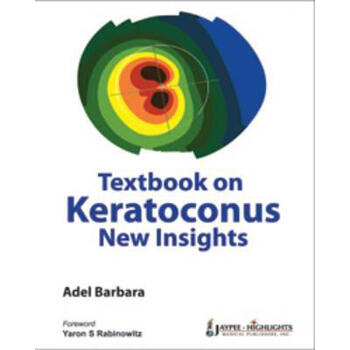Does Kortana Prop Firm offer a trading challenge? Does Kortana Prop Firm Offer a Trading Challenge? In the fast-paced wor
Think Smarter. Trade Sharper.

Welcome to Cryptos


Imagine standing at a crossroads in the financial world—on one side, the fast-paced, high-stakes environment of futures prop firms; on the other, the more established, strategic landscape of hedge fund trading desks. Both avenues offer adrenaline-pumping opportunities for traders, but they’re built on different philosophies, structures, and futures. So, what’s the real deal? Let’s dig into what makes each unique, what you should watch out for, and where this industry is headed.
Futures prop firms often appeal to traders craving speed and flexibility. These organizations provide the capital, but it’s totally on the trader to craft strategies across commodities, indices, forex, crypto, and options. Think of them as the adrenaline junkies of trading—if you’re confident in your skills, you get access to significant leverage, meaning you can amplify your gains (and losses).
A big plus? The trading environment is often lean and quick. Prop firms tend to facilitate rapid skill development, challenging traders to adapt swiftly to volatile markets like crypto swings or geopolitical shifts influencing commodities. For instance, during the recent surge in lithium prices, traders at futures firms could quickly adapt their strategies to capitalize on that trend without the bureaucratic wait typical of larger institutions.
However, this agility comes with its pitfalls—markedly higher risk and a steeper learning curve. Many futures prop firms operate under “profit-share” models, meaning traders keep a big chunk of their gains but also bear the brunt of losses. Its a double-edged sword that rewards boldness and resilience.
Hedge fund trading desks have long been the polished players—more about strategy, diversification, and risk management than pure adrenaline. Typically, hedge funds manage large pools of capital, allocating across stocks, bonds, currencies, and increasingly, alternative assets like cryptocurrencies. Traders here work within well-structured frameworks, aiming for consistent returns regardless of market jitters.
Think of hedge fund prop desks as the tacticians—employing sophisticated algorithms, macroeconomic insights, and sometimes even machine-learning models to outsmart market inefficiencies. Many hedge funds have added futures, options, and commodities to their arsenal, providing multi-layered hedging and profit opportunities.
While traders in hedge fund environments might have less room for reckless moves, they benefit from a supportive infrastructure. Theres usually a focus on long-term strategy rather than short-term adrenaline, blending quantitative analysis with fundamental insights. For example, during the Brexit chaos, hedge fund traders could leverage their diversified positions and data-driven strategies to hedge risks effectively.
The prop trading industry is definitely evolving, thanks in big part to the rise of decentralized finance (DeFi) and new tech. Futures firms and hedge desks alike face a shifting terrain—regulations tightening, liquidity changing, and the rise of automation.
Decentralized finance, in particular, has opened new channels for traders—think of smart contracts enabling trustless trades across crypto assets, or the rise of AI-assisted decision making. These innovations promise faster execution but also pose new risks—smart contract bugs, regulatory crackdowns, and market manipulation still lurk in the shadows.
As for the future? Expect AI-driven trading to become more prevalent, allowing both prop firms and hedge funds to synthesize mountains of data and execute lightning-fast decisions. In the world of futures, this might mean real-time risk management in volatile markets; for hedge desks, more refined macro models predicting market shifts.
The beauty of prop trading? Flexibility and the opportunity to focus on what you do best—crafting strategies, managing risk, and exploiting market anomalies. Whether it’s day trading forex, riding crypto waves, or navigating commodities markets, the ability to test new ideas with solid capital backing is invaluable.
In a broader sense, prop trading embodies the spirit of innovation—experimenting with new asset classes, integrating cutting-edge tech, and adapting faster than traditional investment vehicles. Both futures prop firms and hedge fund desks are embracing these changes, though their approaches differ. One offers the thrill and independence of rapid trading; the other the dependability of strategic, diversified investing.
The prop trading scene isn’t static. As decentralized finance matures, more traders and firms are exploring blockchain-based assets and automated trading protocols. But they need to be cautious—security, regulation, and volatility are constant hurdles. Meanwhile, the integration of AI and machine learning promises to reshape how trades are made, making markets more efficient but also more unpredictable.
What’s next? The potential is enormous. Imagine a world where trades execute via smart contracts, assets are managed on decentralized exchanges, and AI curates opportunities in fractions of a second. That future could democratize access and level the playing field, but it will require navigating complex compliance landscapes.
In the end, whether you lean towards the swift and nimble environment of futures prop firms or the strategic, multi-asset approach of hedge fund prop desks, one thing’s clear: proprietary trading is a vibrant, dynamic frontier—full of risks, rewards, and innovation. If you’re ready to ride the waves of change, this industry’s future still belongs to the bold.
Dare to trade, or dare to lead—either way, the game is just getting started.